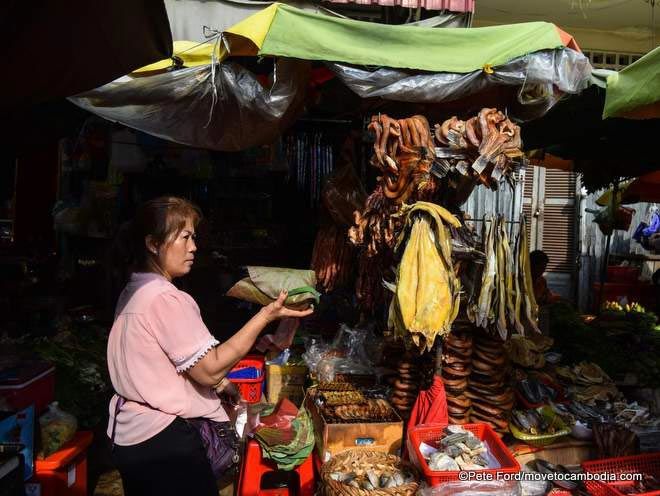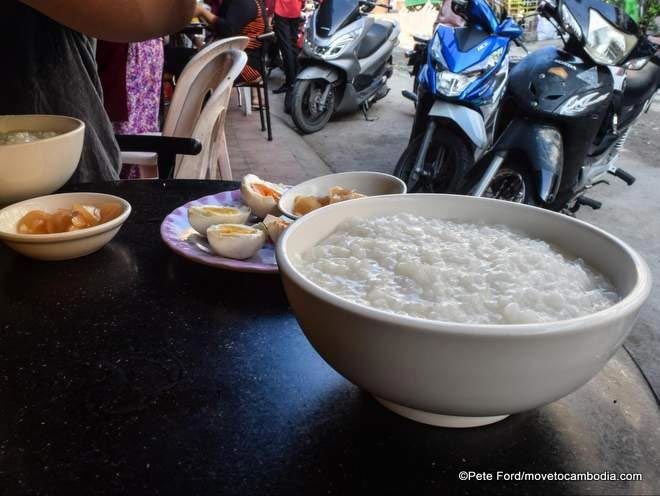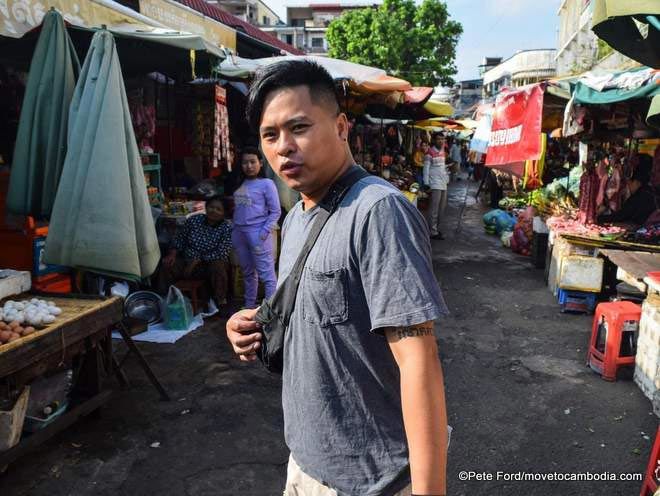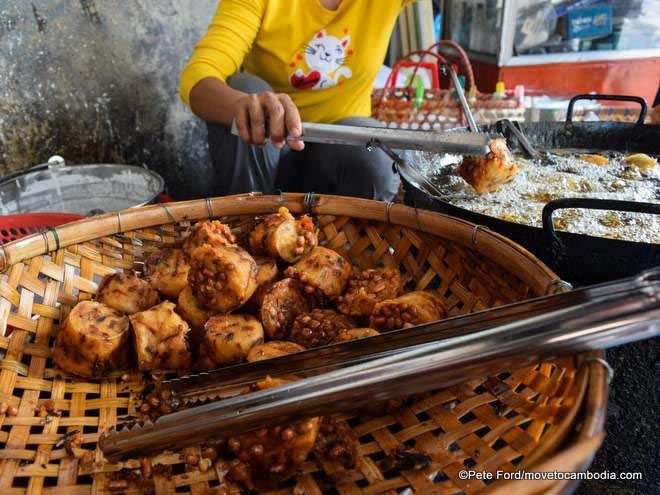Visitors to Southeast Asia have long been attracted by the prospect of exploring the region’s markets, street stalls, and hole-in-the-wall eateries. It is with misty eyes that people reminisce about meals eaten on journeys past in towns, villages, cities, and bus stops. The jokes told at certain noodle stalls, the toothless grins of old ladies, the face-melting chili sauce at 3 a.m.—traveling in Asia is inextricably tied up with the food consumed along the way.

Eating vegetarian in Cambodia isn’t always the easiest feat.
For a vegetarian however, this all becomes more difficult. Fish sauce, oyster sauce, those tiny dried shrimp—animals, particularly of the watery sort, seem ubiquitous in many of Southeast Asia’s most popular dishes.
True, Phnom Penh has plenty of vegetarian options when it comes to restaurants and cafes. But is a meat-free Cambodian street-food experience possible? Phnom Penh Food Tours says the answer is yes.
The “by foodies, for foodies” tour company offers visitors an opportunity to taste some of the many flavors of Cambodia’s capital. Their tours cover all kinds of eating experiences, including—luckily for this non-carnivore—an outing highlighting some of the rather rare Cambodian vegetarian foods.
We started off at 7:45 a.m. at the National Post Office, a fantastic architectural remnant of the French era where philatelists can score some of the country’s eclectic stamps. (Who knew Cambodia was so interested in space and obscure dog breeds?) The Post Office is near some of the city’s most expensive restaurants, but my guide, Sokha, led me to a small, crowded food stall on a side street for our first meal of the day: a large bowl of creamy borbor saw (rice porridge) with salted eggs and crunchy pickled Japanese radish.

One of Cambodia’s most cherished breakfasts borbor saw, is blissfully meat free.
“We normally come here for the pork and rice,” says Sokha. “But the borbor is great, and we were lucky to find a seat — which is a sign of the high quality of the food.”
At this first stop Sokha explains some basics of Cambodian food-stall eating: the different table sauces, the ever-present green tea, and why it’s a good sign if the cup on the table holding the cutlery is full of hot water, rather than cold (it means the silverware has been recently cleaned).
Our next stop is a nearby market. “We try to stay away from the big markets, in favor of smaller places with a more authentic vibe,” Sokha says as we pass women in colorful headscarves, members of the Cham Muslim ethnic minority, busily gutting and descaling fish, and stalls where mounds of vegetables and fruit await customers.
The large selection of chickens, pigs, frogs, and cattle in various states of dismemberment points to the important role that meat plays in Cambodian cuisine. “You don’t mind seeing the meat here, do you?” Sokha asks a little belatedly.

Guide Sokha deftly maneuvering Phnom Penh’s market scene.
I am more excited about the next stop, a small coffee shop that Sokha promised made great joe. When we walk in, a terrible dubbed Hollywood movie is playing on the TV, and the crowd of drinking, smoking, chatting regulars barely notice our arrival. The shop’s tree-trunk table tops, seats, and decorations make it seem like half of Cambodia’s forests have ended up here.
And the coffee? Thick, black and strong, providing the perfect caffeine kick to fuel the rest of our morning.
Phnom Penh Food Tours concentrates on smaller, more intimate eating experiences that visitors to the capital normally miss. And their vegetarian adventure proves there are plenty of meatless street-food delicacies to discover.
“This tour gives people the confidence to go to a market afterwards and order things themselves,” says Sokha while we explore a series of small markets for the rest of the morning.

Named “pig foot” for its shape, this tasty snack is completely vegetarian.
We tasted a nom jerng chruk which translates as “pig foot cake,” which might seem a funny thing to serve on a vegetarian tour, but the small cakes are actually made from rice flour, jicama, and shallots (no pork!). We tried lort chaa, a plump rice noodle fried with vegetables, local tropical fruits including three types of bananas, and several types of delicious coconut-based cakes and confections. With Sokha by my side, joking with the stall keepers and inquiring about ingredients, I did indeed feel that I really might undertake food explorations on my own in the future.
So come on a tour and bring along some curiosity, a camera, and an empty stomach. A few hours later you’ll be a bit sweatier and a lot fuller, with plenty of great photos and a much better idea of authentic Cambodian food—vegetarian style.
Phnom Penh Food Tours cost $65 per person and can be booked on their website, phnompenhfoodtours.com. There’s a coupon this month for $10 off per person: PPQRG10.
Phnom Penh Food Tours is affiliated with Move to Cambodia (but Pete is not).
I lived in BTB and am in Banlung now, having difficulty as a vege, but eat fish. Allergic to all salt and don’t eat fried foods. So I’ve got challenges but been here over a year and learned how to make it work in the places that cater to my needs. Pineapple curry soup with veggies is great! My other fav is bean-filled biscuits.